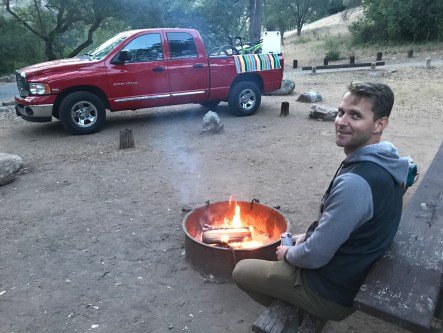Summary: Acceptable shoes for touring, reasonable to walk in, but Gore-Tex is not a great fabric for shoes, as they fill up with water in heavy rain.
Details:
The “Shimano MT60 Gore-Tex Bike Shoe” was sold as a commuting/touring/mountain biking SPD-compatible shoe. They are less obviously “cycling” shoes than some others on the market. When new they look like this:
After many years of use, they look more like this:

As the name suggests, they are made with Gore-Tex waterproof fabric. They have a fairly stiff sole, but with enough flexibility to walk. They are SPD-compatible. You can leave the sole plates in place, and use them without SPDs if preferred.
Earlier models had a velcro strap that held the laces down. These ones have a simple elastic band for tucking spare laces into.
Fit: Shimano runs a little small with their sizing. I normally wear a US 11.5, but in this case went with the EU 47.
Usage:
Long-term readers will know that I have favored SPD-compatible sandals for long-distance touring. Horrifically ugly:

With matching tan/dirt lines:

I wore Shimano SPD sandals for long periods on the road. Later I got some Exustar SPD sandals. Just as ugly.
But when I was touring in Patagonia, I knew the weather would be mostly cool and wet, so wanted to just take shoes. These were the only shoes I took on this trip, for both cycling and walking. Here they are in action on the side of the road:

Note the wet weather gear – that was the sort of conditions these were designed for.
When not touring, these were my only SPD shoes. If I was going mountain biking, or riding my touring bike in cool/wet conditions, I would wear these. They’ve had plenty of on- and off-road usage.
Likes:
- Styling was (for the time) low-key. There are much better options today for shoes that don’t scream I’M A CYCLING NERD, but in 2009 there were not as many options. They looked like typical “Westerner traveling abroad” shoes.
- Pretty good for walking around. Obviously some scraping of the cleats, and the soles are stiffer than regular shoes, but they are fine for walking.
Dislikes:
- The waterproof fabric seems like a good idea. And if you step in small puddles, it seems great. But on very wet days, you will get water splashing up from your bike and cars, and the shoes will tend to fill up with water. They don’t drain. Better to wear Sealskinz waterproof socks instead.
- Laces are too long, and the elastic holder stretches over time, so the laces are not held in, and are prone to tangling with your chain ring.
- The sole is not well-suited for pushing your bike up muddy MTB trails. I wore mine mountain biking because that’s what I had, but if you’re looking for a dedicated MTB SPD shoe, consider other designs.
Verdict:
Would not buy again. Nothing against Shimano shoes, the price/quality was fair, but I would not buy Gore-Tex cycling shoes again.
























